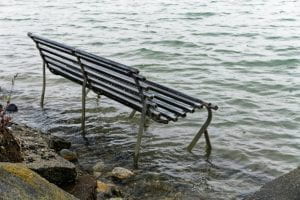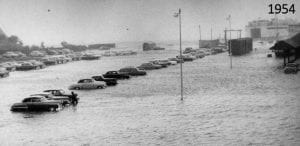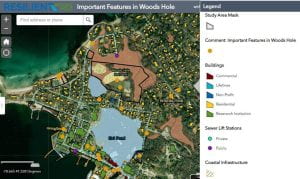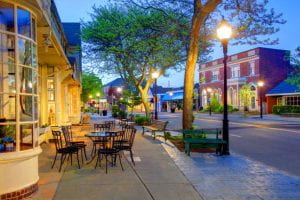Collaborative Governance , Active Hope, Climate Change Resiliency
A Vulnerable City On The Water

Park bench swamped by a rising sea level
“Social capital plays an important role in facilitating community disaster response and recovery: Neighbors coming together to help neighbors can make all the difference when disaster strikes.”
Brad Lander
We must take immediate action to reduce our greenhouse gas emissions if we are to avoid catastrophic consequences for future generations. The time is now to be proactive in climate education and transition into energy sources and climate actions that will protect our planet.
In this perilous time of global climate change, Falmouth, Massachusetts,a city built on the water, is extremely vulnerable to rising sea levels.It is a city that uses Social Cohesion as a climate strategy. Its mission is to live within our ecosystem limits and improve quality of life for all of its diverse residents.
Collective Action, Working Together for Change
History of Sea Rise and Flooding in Falmouth:
Falmouth is a community that has embraced the ideas of collective action and community building in order to be proactive in meeting the needs of all people as they develop policy and public education around the impacts that the climate changes are having on sea level rise. Sea rise, as well as the threat for more catastrophic weather events, has motivated the community to work together to educate the public and design plans to protect the local markets, Native Wampanoag cultures and ecosystems.
The social, economic, and cultural impacts of climate change is directly impacting a community. However, collaborative governance is being used to make sure all stakeholders have a voice in decisions made.
Falmouth is an isolated city with a density of 901.4 people per square mile and a population that varies from 32,000 to 93,000 seasonally. It is made up of 54.4 square miles of land and includes 10.3 miles of water including freshwater ponds, and salt water bays and inlets.
Falmouth has been a major port for fishing and marine shipping and industry for many centuries. In fact, in the 1860’s it was a major location for the whaling industry. Three major marine centers located here include the Woods Hole Oceanographic Institute, The Marine Biological Laboratory and the Northeast Fisheries Center. In addition, it is a ferry port to Nantucket and Martha’s Vineyard.
As a result of the industrial revolution, the global greenhouse gasses in the atmosphere have increased dramatically resulting in climate change and sea level rise. It is expected that this will also bring an increase in the frequency and intensity of major storms.
This area of Cape Cod is extremely at risk for negative consequences of climate change. Partnerships have formed between business, leaders, city planners, and the community members to address the risks and find innovative solutions to this threat. Leaders are evaluating priorities, decision makers are making choices about how and when to act and how to balance the needs of the community with sustainability efforts. The difficulty of these decisions stem from the uncertainties related to climate change.
In 1954, Hurricane Carol caused massive damage to Falmouth with its 120 mile an hour winds and 14 foot storm surge. It caused the death of 5 people, the evacuation of 20,000 residents, and cost the city millions of dollars in damage. The threat of a similar storm hitting this location is real. Resilience and planning for this type of event as well proactive readiness for the gradual increase in sea level needs to be a priority. Education about global climate change and individual accountability is essential .Resilience planning designed to protect the city’s infrastructure and its ecosystems and habitats needs to begin immediately.


tropical hurricane approaching the USA.Elements of this image are furnished by NASA.
Falmouth Flood Zones

Falmouth is a city in Barnstable County, Massachusetts, United States